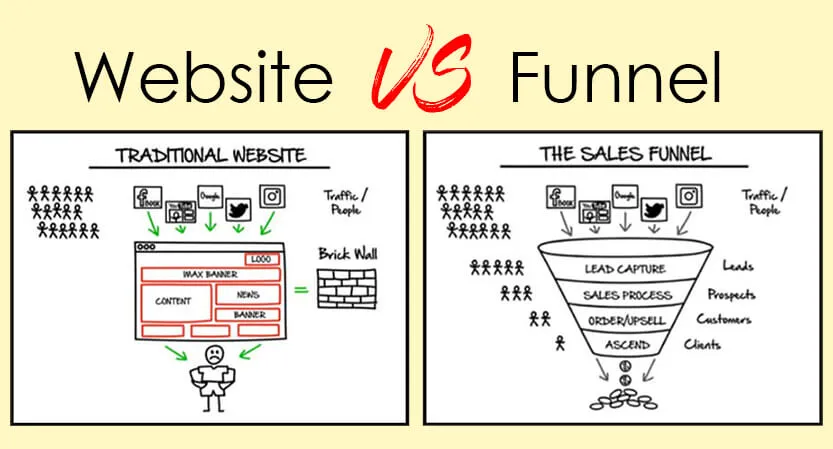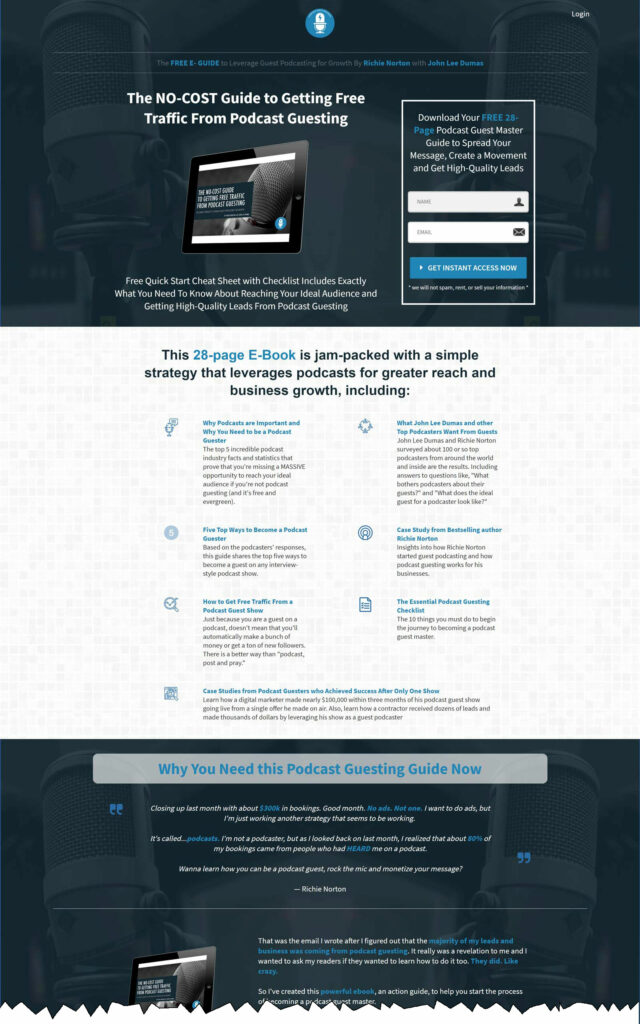Website without a Sales Funnel
Website without a Lead Funnel:
Information-Centric Design:
Traditional websites often prioritize providing information about a company, its products or services, and other relevant details.
Navigation typically includes pages like Home, About Us, Products/Services, Contact, etc.
The primary goal is to present information comprehensively and encourage exploration.
Broader Audience Engagement:
Websites without a lead funnel may cater to a broader audience without a specific focus on lead generation.
Users may visit the site for various reasons, such as gathering information, reading blog posts, or simply exploring the content.
Multiple CTAs (Call-to-Actions):
Websites often feature multiple calls-to-action (CTAs) that guide users to different sections or pages rather than directing them toward a specific lead generation goal.
The user journey can be less linear, and there may not be a clear path to lead visitors towards providing contact information or other lead-related actions.
Lead Funnel:
Focused Lead Generation Path:
A lead funnel is designed with the specific goal of generating leads, encouraging visitors to provide their contact information or take other actions that indicate interest.
The page is structured to guide users through a step-by-step process, focusing on a singular lead-related call-to-action.
Simplified Design:
The design of a lead funnel is often simpler and more streamlined, eliminating distractions and keeping the user’s attention on the primary objective of lead generation.
There may be minimal navigation options to reduce the chances of users deviating from the lead generation path.
Targeted Audience Segmentation:
Lead funnels often incorporate Different stages of the funnel to address the needs of users at various points in their decision-making process, nurturing them towards providing their contact information.
Emphasis on Lead Conversion Metrics:
Lead funnels are closely monitored with analytics to track lead conversion rates at each stage.
Adjustments can be made based on data to optimize the funnel for better lead generation results.
Automation and Follow-up:
Lead funnels frequently incorporate automation tools for tasks like email follow-ups, retargeting ads, and other strategies to keep the brand in the lead’s mind and encourage further engagement.
In summary, while a traditional website serves as a comprehensive online presence, a lead funnel is strategically designed to guide visitors through a specific lead generation process. It’s a more focused and intentional approach to turning potential prospects into leads.

A Lead Funnel Example
